From internal pipelines, drains are transported by external ...


Today it is difficult to imagine comfort without a variety of household appliances and many lighting devices, but the possibility of their safe use depends on high-quality wiring, as well as the availability of grounding in the apartment. The latter is especially important, since it serves as reliable protection against electric shock, and allows you to save electrical appliances from breakdowns and power surges. Unfortunately, in the CIS in the houses of the old housing stock, grounding of apartments was not carried out. Only in new homes, starting in 1998, began to establish a real electrical grounding.
And if in new buildings the problem of grounding has been largely resolved, then for the houses of the old housing stock it remains relevant. Often, the owners of such apartments begin to think about grounding when they make major repairs or purchase expensive household appliances. And the first thing they encounter is the lack of the possibility of arranging high-quality grounding. There are many reasons for this, but having knowledge about what grounding is, how it is done, and what needs to be done for this, you can perform all the work without much difficulty.
Create protective earth in the apartment you can in any case, it is important to know where and which wire to connect. To do this, you will need to familiarize yourself with the various types of grounding systems. This is important for a number of reasons. Firstly, in houses built at different periods of time, are used different types grounding systems. And in order not to confuse anything, it is necessary to understand them at least a little. Secondly, an error in creating a ground can cause a failure of the entire network as a whole or even lead to a fire. The safety of the use of electrical appliances and the lives of people depend on a properly connected grounding.
So, according to GOST, the following types of grounding systems for the power grid exist: TN-S, TN-C, TN-S-S, TT, IT. The difference between the two is a separate ground wire. The fact is that in some systems there is a “phase”, “zero” and “earth”, and in some - only “phase” and “zero”. The first two letters indicate the nature of the grounding of the power source and the exposed parts of the conductor. For us, the second part of the marking is of great interest. It is from it that you can find out where there is a separate ground wire, and where it is combined with "zero". So the letter "S" indicates that the system has a separate wire for "zero" and a separate one for grounding. The letter "C" indicates that the "ground" and "zero" are represented by one wire. The letter "N" marks the neutral, which is grounded in systems with alternating current.
The grounding circuit in an apartment may contain PE and PEN markings. In fact, this marking indicates the presence of a separate or combined grounding. PEN is the combined "zero" and ground (C), and PE - separate conductors for "zero" and ground (S).
Important! TT system provides direct grounding of the equipment case. The IT system provides for the grounding of the equipment case through resistance or complete insulation of live conductors. These systems are commonly used in enterprises.
Knowing the marking of grounding systems, it can be noted that in houses built before 1998, the TN-C system is used. In such houses laid two-wire wiring made of aluminum or copper. Therefore, in high-rise buildings of that time, three phases (L) and one PEN (C) conductor are brought into the riser. Such grounding is also called grounding.

Grounding scheme in the apartment of the old housing stock:
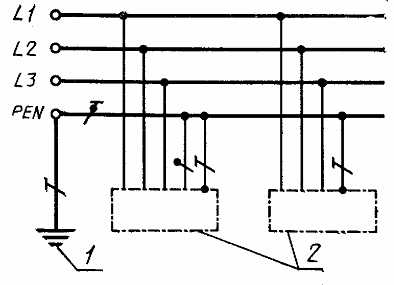
TN-C
Modern homes are labeled with the TN-S or TN-S-S system. Three phases (L), one neutral working conductor (N) and one protected PE (S) conductor are connected to the riser of the house, and three-core wiring is laid in the premises. Connecting to such a system is much simpler in comparison with the TN-C system, since there are separate connection points for each conductor, and grounding has a separate connection with the metal housing of the shield.
Grounding scheme in the apartment of the new housing stock:

TN-S 1 - grounding of the power source; 2 - open conductive parts.
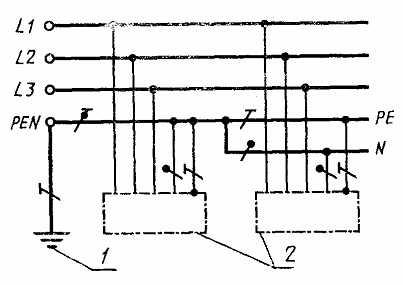
TN-S-S 1 - grounding of the power source; 2 - open conductive parts.
It should be noted that the ground loop is arranged in a multi-storey building at the stage of its construction, therefore, it does not make sense to calculate the grounding. Creating a circuit diagram and all calculations are carried out at the design stage of the house. And in case you need to make new calculations, it is better to contact specialists or use a special program.
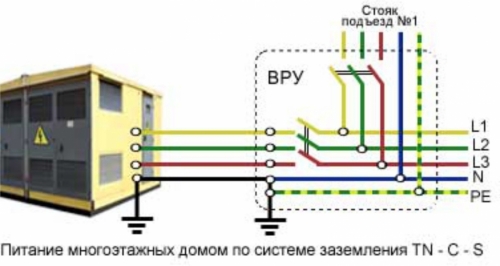
There are several ways to determine which grounding system is in the house. The first is to turn to electricians in the housing and communal services with the question of grounding. The second is just to look into the distribution panel on the floor and carefully examine the supply cable. The TN-C-S type grounding system is characterized by the use of a five-core cable: three phases (L), zero (N), and ground (PE). To facilitate identification, all wires have their own color. So the “phase” (L) is brown or red, the “zero” (N) is blue or blue, the ground (PE) is a yellow wire with a green stripe or just green.
As noted earlier, grounding in new homes with the TN-C-S system is quite simple. The fact is that three-core wiring was originally laid inside the premises, and it has a separate grounding cable. But if, having acquired an apartment after the builders, a lack of wired wiring is found, then there is also nothing wrong, you can do it yourself. Bring all the wires to the shield in the apartment is not difficult.
The wires are connected as follows. If the distribution board was not installed in the apartment, you will have to deal with its installation and installation of RCDs inside the panel. Typically, the flap is placed next to the front door in an easily accessible place. We drill a through hole next to the shield and pass a cable through it to connect to the shield on the landing. Connect the incoming cable wires to the shield in the apartment as follows:
Now we call electricians to turn off the power in the riser. Once this is done, the electricians will connect to the main distribution panel and turn on the electricity again. Upon completion of all work, you can test the network for grounding. Grounding test is carried out in the presence of a conventional voltmeter, other methods are unsafe. On the voltmeter, set the maximum voltage to 250 V and apply one probe to the ground, the second to the "phase". The arrow should deviate by 230 - 240 V, so everything is in order.
Important! Connecting to the main shield yourself is prohibited. Firstly, you cannot disable the riser yourself, and even if you can, you do not have permission to do so. Secondly, the connection to the general power grid should be made by a person who has the appropriate powers, knowledge and skills. Thirdly, for disconnection without permission you can be fined or apply more stringent sanctions. In addition, any error can result in a fire or damage to the power grid.
It was previously noted that the TN-C grounding system is characteristic of the houses of the old housing stock. You can verify this in the same way as described above. The only difference is that by looking into the distribution panel, you can see the absence of a yellow-green wire in the supply cable. There can be three phases and zero. Grounding in such houses, in fact, is absent, and making it for an individual apartment is somewhat more difficult, but possible. To do this, you will have to perform a major overhaul with a complete replacement of all wiring. This is important, since the old wiring is a two-wire aluminum wire, and a third core is also needed to create a ground.
![]()
Important! With a complete replacement of the wiring and laying a new one, it is necessary to draw up a plan diagram of the laid wires with all junction boxes and connection points. All work is carried out in strict compliance with safety regulations, wiring requirements, installation of connection points and lighting fixtures. When choosing wires and electrical appliances, you should know the requirements that apply to them for installation in residential premises. From the observance of all the rules during installation, your safety when using the mains will depend.
After laying the new wiring, we install the distribution panel and RCD circuit breakers in the same way as described above for the TN-C-S grounding system. We call electricians, and they make a connection. But here the connection to the main distribution panel itself will be made somewhat differently. It's all about the missing ground wire. And at this stage, you can go in two ways: to complete grounding or full grounding.

This path is somewhat simpler, but also less secure. The fact is that the recommendations in accordance with GOST for TN-C systems are somewhat outdated, not to mention the partially worn supply cable, worn electrical equipment and deplorable condition of the shields. As noted earlier, for such systems, grounding is performed by combining the neutral conductor with the grounding conductor. Which in combination with worn out equipment can cause a fire. But there is nothing to be done about it, according to GOST everything is as it should be.
The second way involves the creation of a full-fledged ground loop. It is more complex, but also more reliable. You will have to create your own ground loop. To do this, having agreed with the electricians, you can bury the electrodes in the basement of the house and stretch a separate wire from them along the riser and ground it into the apartment. Some homeowners on the lower floors dig a ground loop directly next to the house. But it is worth noting that the creation of a full-fledged grounding in old houses is a very expensive affair, requiring calculations for the grounding loop itself.
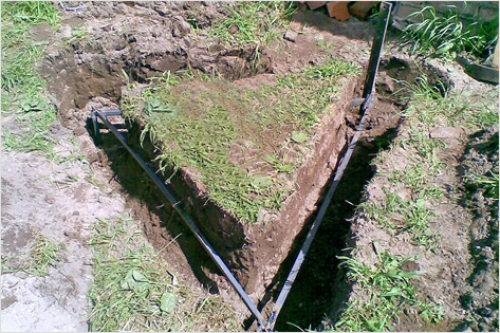
Important! Some owners ground their wiring by connecting a wire to a radiator or riser. cold wateras well as gas pipes. This is an extremely erroneous decision. Firstly, such grounding reduces the reliability of the pipes. Secondly, no one will like that from touching a warm battery it will be shocked by current. Thirdly, the current flowing through such a ground can be large enough to decrease the child who accidentally touched the pipe.
The creation of grounding in the apartment is a very responsible occupation. The safety of using electrical appliances will depend on how well and reliably it is made. And compliance with the rules and requirements for wiring will allow you to forget about the problems with the power grid for many years.
In all new buildings, the grounding problem was solved already when the house was commissioned, however, in old apartments it is often necessary to do it yourself.
You can create protection only knowing which wire you need to connect to. In houses built at different times, different grounding systems are used.
If the apartment does not have grounding, it must be done on its own, but you should be very careful, as incorrectly performed work can lead to a power outage or even a fire.
The following types are known:
These systems differ in that in some of them there is a ground wire, and in some there is only a phase and a zero. It is possible to understand whether such a wire can be found in the second part of the marking of the system — in a system with the letter S, zero and ground are in different wires, and with the letter C in one. The letter N indicates the neutral used in AC networks.
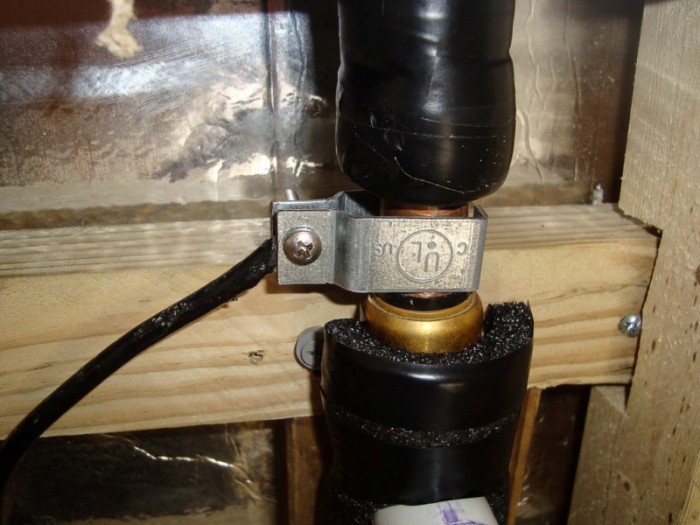
Grounding in old apartments is usually done according to the TN-C system. In houses built before 1998, the wiring is usually two-wire, with a wire of aluminum and copper. More modern homes typically use the TN-S or TN-C-S system.
To determine the type of protection system in your home, you must contact the Housing Office, where electricians will answer you this question.
To determine if there is grounding of the bathtub in the apartment, or of any other rooms, you need to open the electrical panel, find the input cable and count the number of wires in them. Five conductors - means the TN-C-S system in the house. Four conductors indicate that TN-C. Knowing which system, it will be easier for you to answer the question of how to make grounding in the apartment.
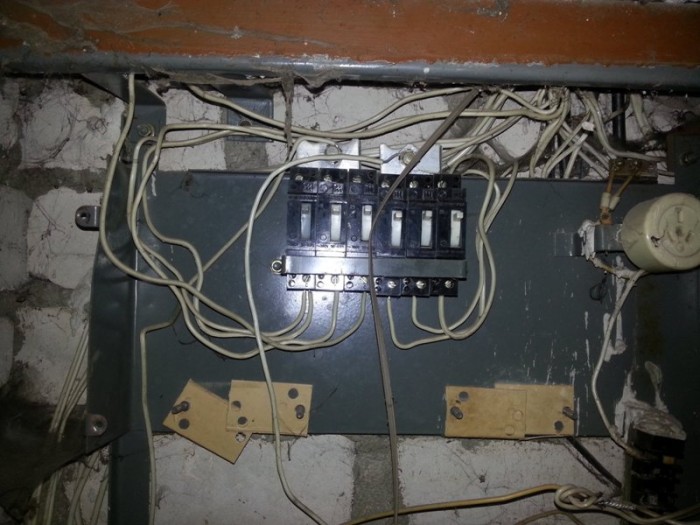
The easiest way to ground the outlets in the apartment is to make the residents of the first floors. In this case, they simply can lead the ground wire into the yard.

Residents of other floors need to connect the ground wire to the shield and bring it to the zero panel. After that, the wiring of three wires stretches to the right place. This is a very economical and easy way, but it is only possible if you are currently repairing. In other cases, for example, when buying new household appliances, grounding is also necessary, but you can’t make it this way. True, you can connect the equipment directly to the outlet, but there is a risk of getting an electric shock when working with it.
If you purchased new equipment, such as a washing machine or a boiler, then for starters, you should replace the old outlet with a new one that has protection. It is important that the new outlet is exactly the same size as the old one, because otherwise you will have to replace the place for the outlet.
If you can’t pull wires through the entire apartment, you can simply switch the phase zero to ground in the outlet. To do this, using an indicator, check which wire is zero. It is important that the wire used for the jumper is uniform.

Thus, you can easily ground the outlet, however, if you have the opportunity, it is better to resort to a complete grounding of the apartment.
A well-made grounding can not only protect you when working with electrical appliances, protect against electric shock, but also significantly extend the life of the devices. It is able to protect them from damage due to power surges.
At the moment, almost everyone can face a situation where it is necessary to make grounding in the apartment, but there is simply no corresponding ground terminal on the floor shield. Usually, the lack of a circuit can be observed only in old houses.
Now, every electrician can solve a similar problem in his own way: who installs it narrowly, who makes an individual circuit, and who generally connects the ground circuit to the battery. In this article, we decided to talk about how to properly do the grounding in the apartment with our own hands. You can also find out which protection option is prohibited.
If your house simply does not have grounding, but you plan to protect yourself, then in this case you will need to install. This device, of course, will not be able to solve this problem completely, but at the moment when a current leak occurs, it can simply turn off the power.

You will also need to learn how to replace wiring with three-wire wires. Thanks to this, in the event that grounding appears in the house, you will be ready. You just need to connect the PE wire to the corresponding busbar of the electrical panel.
In most cases, you can meet residents who plan to install their own circuit. If you also decide to make your own grounding in Khrushchev, then remember that this is a responsible process. The essence of the idea is that you need to stretch a single-core PE wire along the risers to the basement. Near the house, you will need to drive at least three metal corners into the ground. They will also need to be connected together using a metal plate. To the finished structure, you will need to connect the wire from the floor. The other end of this wire will need to be secured in the shield. Now it remains just to connect the grounding of the apartment with the shield and now the protection against current leakage will be completely ready.

It's important to know! A similar system, you need to discuss only with management company. It is not recommended to make such a decision on your own, as in the future you will be able to encounter certain problems.
It is also necessary to remember that if you decide to make your own ground electrode system in the apartment, then the PE wire must be copper and have a cross section of at least 4 mm.kv. This grounding method is perfect not only for residents of the 1st floor, but also for other floors.
Also recently, you can also meet woe-electricians. They want to solve a similar problem simply by connecting the third wire to the water supply system, but this is completely wrong. This option cannot be used, as you may encounter the following problems:
You also need to remember that such tasks will be completely prohibited in the rules of the EMP.
In addition, the grounding method may also be considered unsafe for the following methods:
This is all the information you need to know about how to make grounding in the apartment, if it is completely absent. We recommend using an RCD as a temporary protection option. It is also necessary to contact the authorities to carry out the modernization of the wiring in your home.
How to make grounding in the apartment of an old house? What can, what cannot
Today, all apartments are saturated with powerful electrical appliances. For safety reasons, they must be connected to a network with an earthing circuit. This protects the user from electric shock in the event of an emergency.
But our houses began to be equipped with fully protected wiring only since 1998. How to be the owners of houses of earlier construction, is it possible to make grounding in your apartment? Let's try to deal with this issue.
Bit of theory
Before you decide to mount the grounding structure, be sure to get acquainted with the theoretical part. All requirements for this device are specified in the EMP (Electrical Installation Rules), chapter 1.7. Grounding and protective electrical safety measures. Let us briefly consider the basic concepts that appear in this part of the PUE.
In addition to the PUE, the requirements for the grounding structures of houses are regulated by documents:
None of the above documents clearly indicate that protective structures must be mounted by special organizations. The basic requirement is that everything must meet the requirements specified in the documents.
Please note: when you independently install the grounding device in the house, when it fails, no one compensates your losses. If you order a project for power engineers and a special organization performs the work, there is a possibility of receiving compensation. But the cost of installation will be quite high.
Getting down
First, find out if grounding is present in your home. Together with the electrician from the DEZ, look at which cable is suitable from the substation on the SHVS. If it is five-core, your house is equipped with wiring according to the TN-C-S system, i.e., the ground loop is already present. But if four-core - your TN-C system and you should think about installing it.
Residents of the first floors of a high-rise building can afford a modular pin loop device - their apartments are not far from the ground. And what about the inhabitants of the upper floors? The easiest and cheapest solution to this problem is to lay a new three-wire wiring during repair, install sockets equipped with a grounding contact.

Grounding socket
If the house is powered by the TN-C-S system, it is not difficult to make the connection - connect the ground wire to the corresponding bus on the distribution board.

Switchboard in the apartment
When washing a house using the TN-C system, the new three-wire wiring will not solve the problem. So you just prepare your power grid in case your home is on time overhaul decide to connect via the TN-C-S system. But before this grounding you will not have.
The second option. In old houses, wiring is made with a two-wire aluminum cable. It must be replaced by a three-core one core is needed for grounding. At front door install a distribution board with an RCD (residual current device).
The next step is to connect to the main distribution panel. There are two options in the TN-C system - grounding or full grounding.

Zero tire in the floor board
This is the easiest way, but does not provide complete security. It is performed by combining a neutral wire with a grounding conductor.
Remember: when the neutral conductor is burned off, RCDs often do not have time to trip - they themselves burn faster.
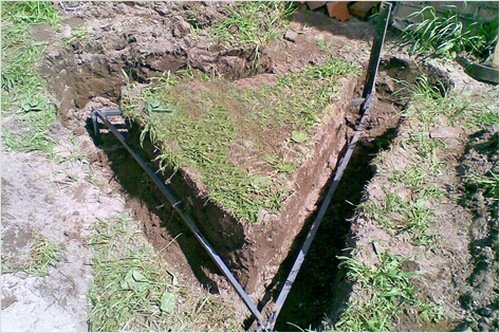
Ground loop
This method creates the most effective protection for humans and electrical appliances. It is necessary to create a circuit consisting of grounding conductors connected to each other by conductive plates. A wire is laid from the circuit along the riser and grounding is distributed from it to the apartments.
This method requires preliminary calculations and the participation of specialists in the installation. The grounding loop must be performed by all residents of the house - the cost of each apartment will be significantly less.
Having decided to independently ground, work is often performed in violation of the requirements specified in the EMP, PTBE, PTEE. It is forbidden to do the following:
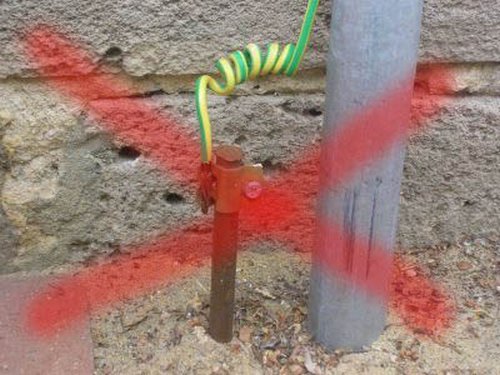
Incorrect ground wire connection

Incorrect and correct sequence of connecting equipment to the ground loop
Conclusion
The most difficult task is to create a grounding circuit in old houses connected via TN-C. By itself, this circuit is unsuitable for obtaining a working ground. The current present on the neutral wire itself creates electrical noise. This must be taken into account when creating a protective system.
Therefore, the installation of the grounding structure must be taken with all responsibility. The safety of using electrical appliances depends on how well and competently this work is done.
They don’t joke with electricity. Engage only competent electricians for electrical work.